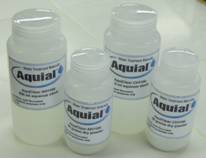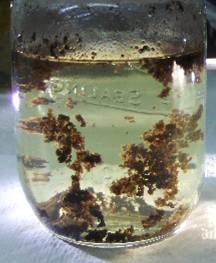|
|
|
Flocculants
A flocculant is typically a very high Mw, linear polymer with binding affinity
for particulates that may be dispersed in water for one reason or another. The particulates tend to very small, easily
stirred, and slow to settle, making them difficult to remove from the water.
Depending on the type of particulates that are encountered, often
all that is needed is a small dose of flocculant to tie them together so that the floculated solids can be removed.
This is not the case in the intractable, reverse emulsions of oily produced water, but that is another story. Proper
use of flocculants for clarification of these difficult emulsions of oil and oily solids in water not only call for the
right chemistry but also Aquial treatment protocols and strategies. One type of Aquero flocculant is designed for use with soil particles and other agricultural particulates. This is the SoilSentry™ product. Another class of Aquero flocculants is being used for water clarification in oilfield applications. The Aquero flocculants are based on biological feedstocks. |
||||||||||||||||||||||


